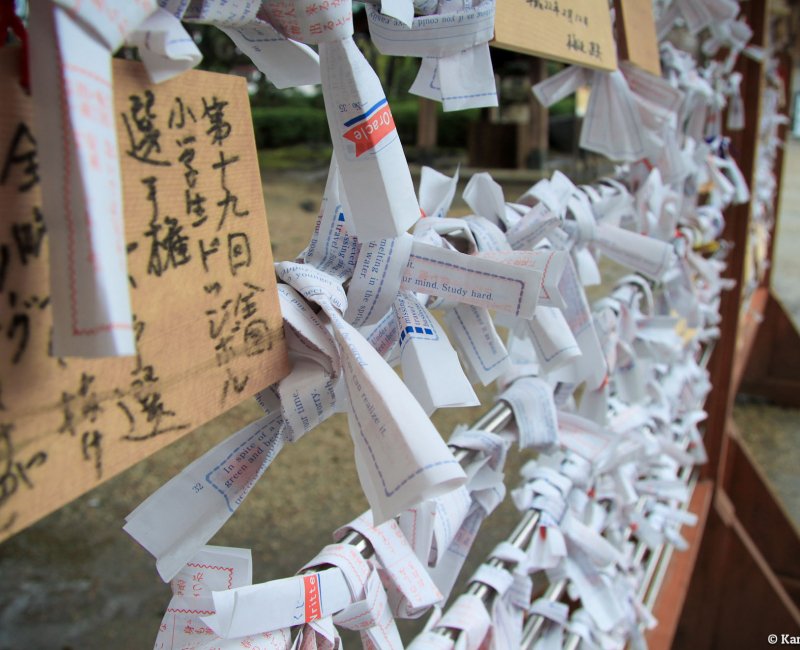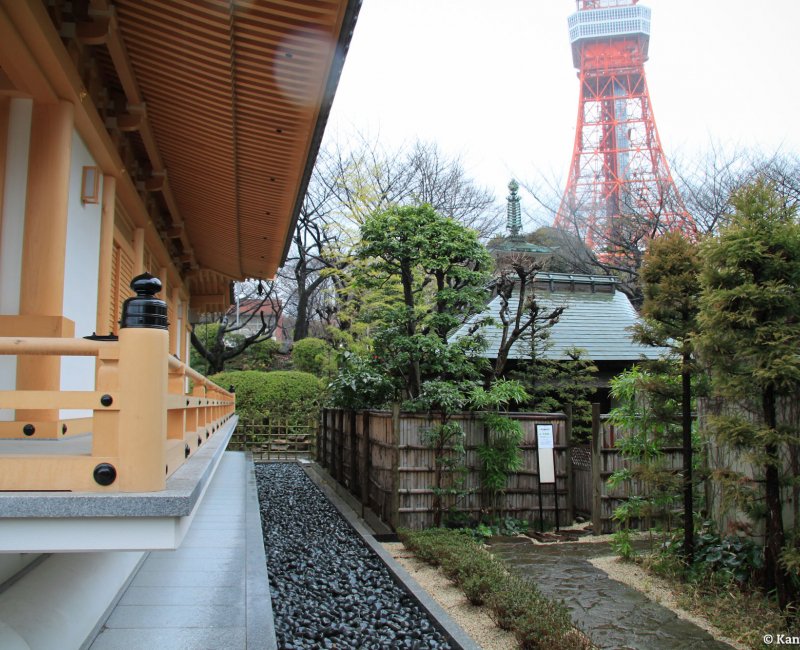Zojo-ji
Temple to Attend Buddhist Monks Ceremonies
Zojo-ji is an important temple of the Jodo (Pure Land) School of Japanese Buddhism located near the Tokyo Tower, in Minato ward’s Shiba district. It shelters a Tokugawa shoguns’ graveyard, and preserves many Cultural Properties.
The origins of the Zojo-ji temple date back to the 9th century and it is said it was founded by a disciple of Kukai (Shingon sect), near Hirakawa-chô a little bit up to the north. The temple was transferred to the Jodo Pure Land sect in 1393 and became one of its most important location in the east of the country.
Tokugawa Ieyasu received the eastern provinces in 1590 and chose Zôjo-ji and Kan’ei-ji to be hereditary temples (菩提寺 bodaiji) for his clan. A pagoda and the Tosho-gu pavilion, both in Ueno Park, are the only remains of Kan’ei-ji, and Zôjô-ji was relocated where it is currently standing in 1598. To this day, it still shelters several tombs of the Tokugawa dynasty shoguns.
Testimony from the Edo period
Nowadays, only a few pavilions remain, but it was flourishing during the Edo period (1603 – 1868), a time when it developed in a prominent monastery where thousands of monks lived and whose grounds extended on the whole superficy of today’s Shiba Park.
The only survivor of this Golden Age is the main gate Sangedatsu-mon 三解脱門. Located on Hibiya-dori avenue, this monumental entrance was built in 1622 and measures 21 meters high, 19 meters wide and 9 meters in length. Its upper gallery hosts a Buddhist triad and the statues of 16 Rakan disciples. It was listed as an Important Cultural Property in 1915.

A lively and dynamic place of worship
Most of the buildings were destroyed either by fires 🔥 (especially in 1873 and 1909), or by 1945’s bombings, therefore the current days pavilions were constructed over the second half of the 20th century. Three new buildings were even added between 2009 and 2011:
- Enko-daishi-do to honor Hônen, the founder of the Pure Land school,
- Gakuryô, the living and training quarters of the school’s future monks; and,
- Ankoku-den, the new shelter for the Buddhist image worshiped since Ieyasu’s times: Kurohonzon Amida Nyorai (黒本尊阿弥陀如来 "the black Amida Nyorai")
In 2021, the roof of the main hall Daiden was renovated and covered with 60,000 titan tiles, in an unheard of world-class project, to improve its durability and its resistance to fires, typhoons 🌀 and earthquakes while preserving its traditional look.

The most interesting thing to do in Zôjô-ji is probably to attend a Buddhist monks ceremony. Unfortunately, there's no fixed schedule for prayers but if you go on a Sunday morning, you're most likely be able to attend a sermon, opened to the general public. Moreover, some celebrations attract even non-religious people, such as Hana Matsuri commemorating Buddha’s birth every April 8.
Located in the heart of a business district, Zojoji is quite unmissable, all the more as it is close to the Tokyo Tower 🗼, that has lost attractiveness since the opening of the Tokyo SkyTree. In the temple’s grounds, you will also find a hundred of Jizô statues for soothing the deceased children’s souls and an exhibition room dedicated to Tokugawa Ieyasu and the temple’s treasures.

